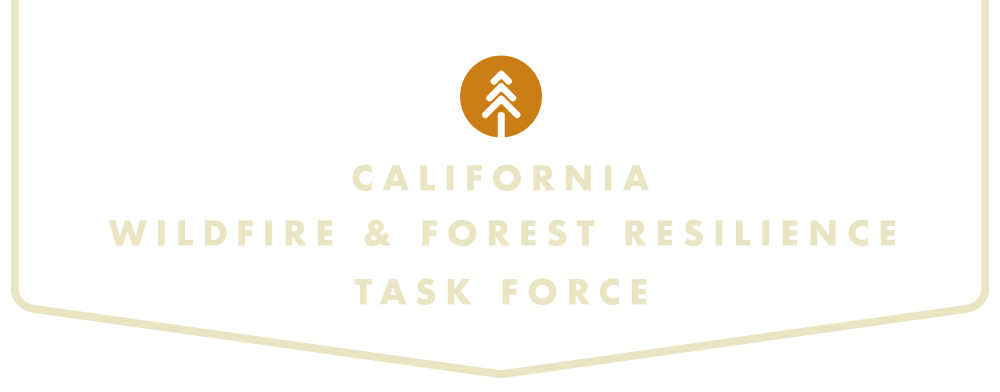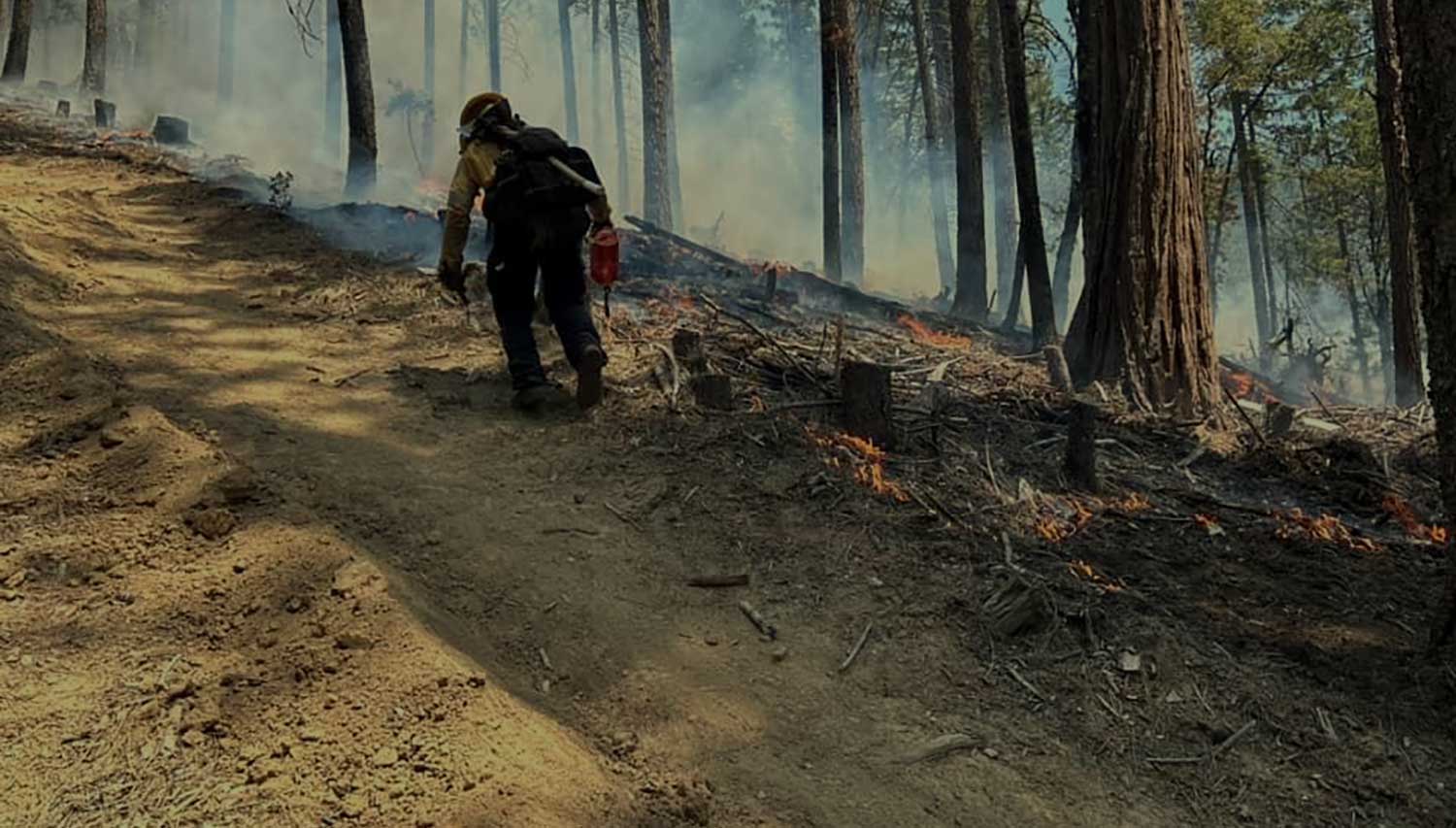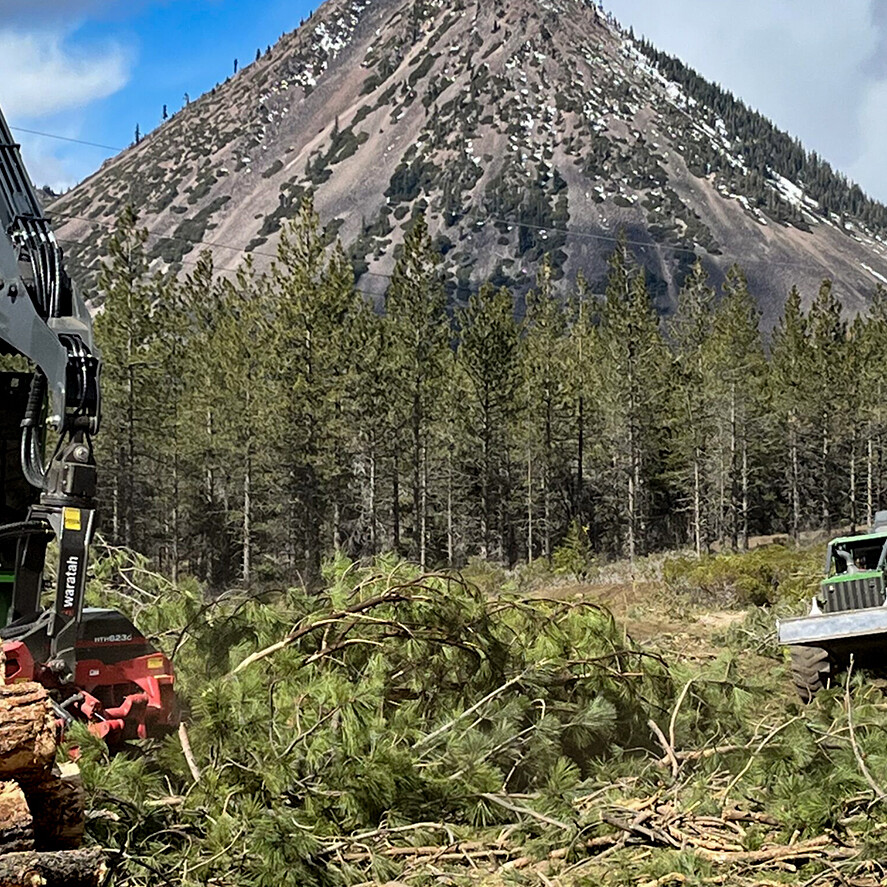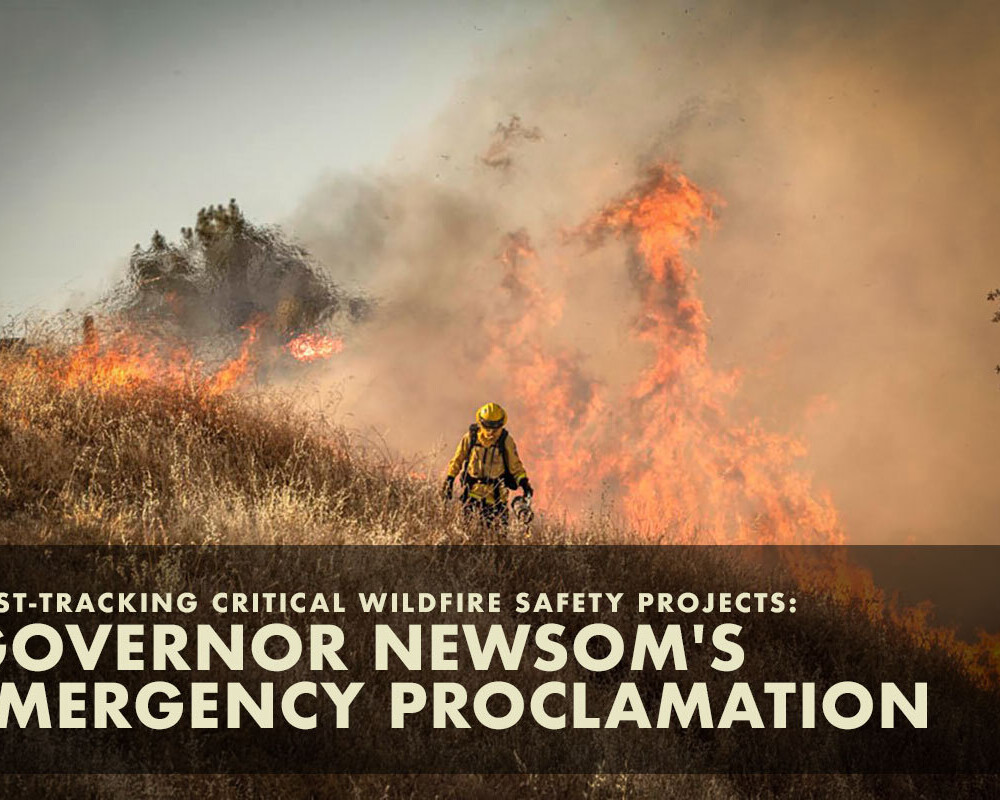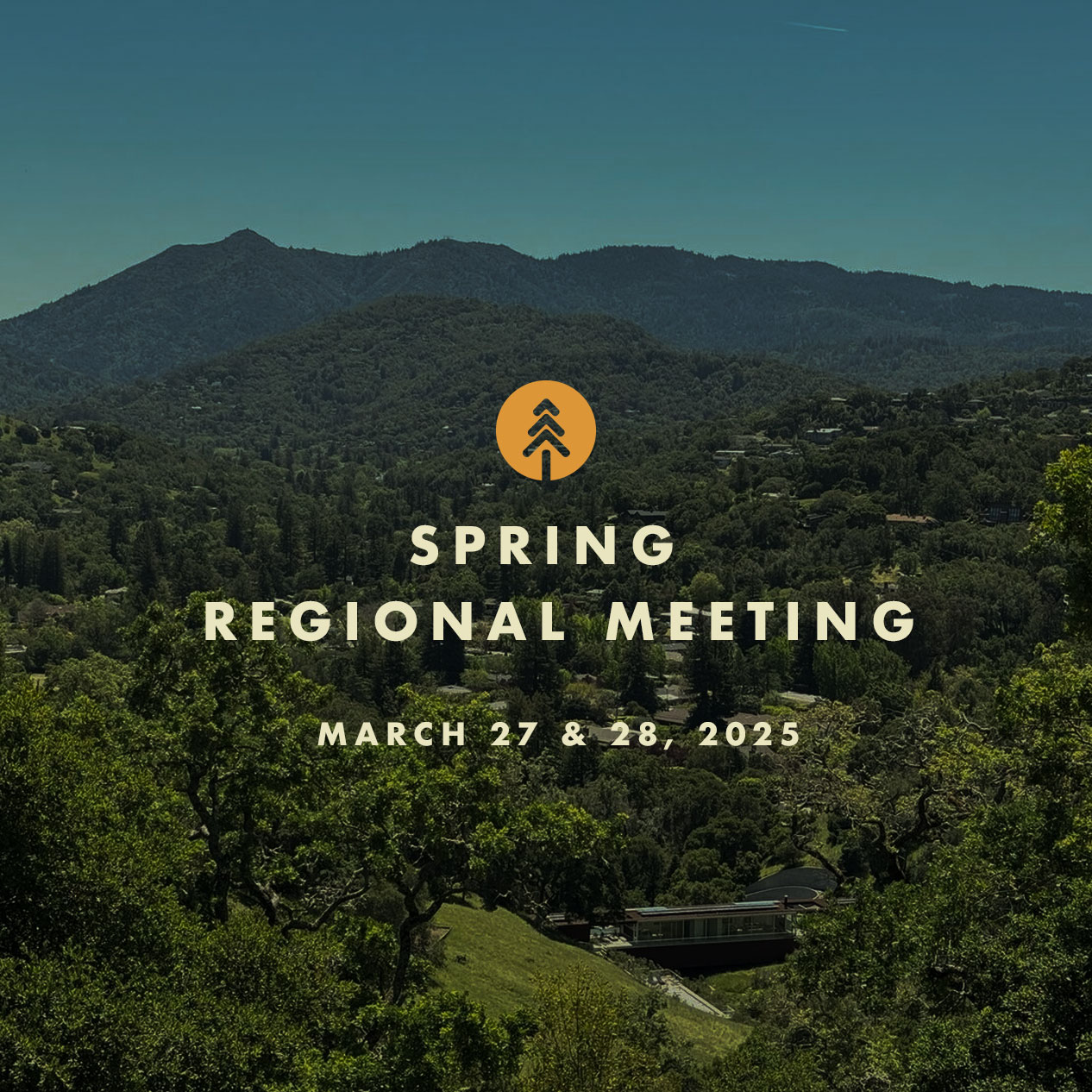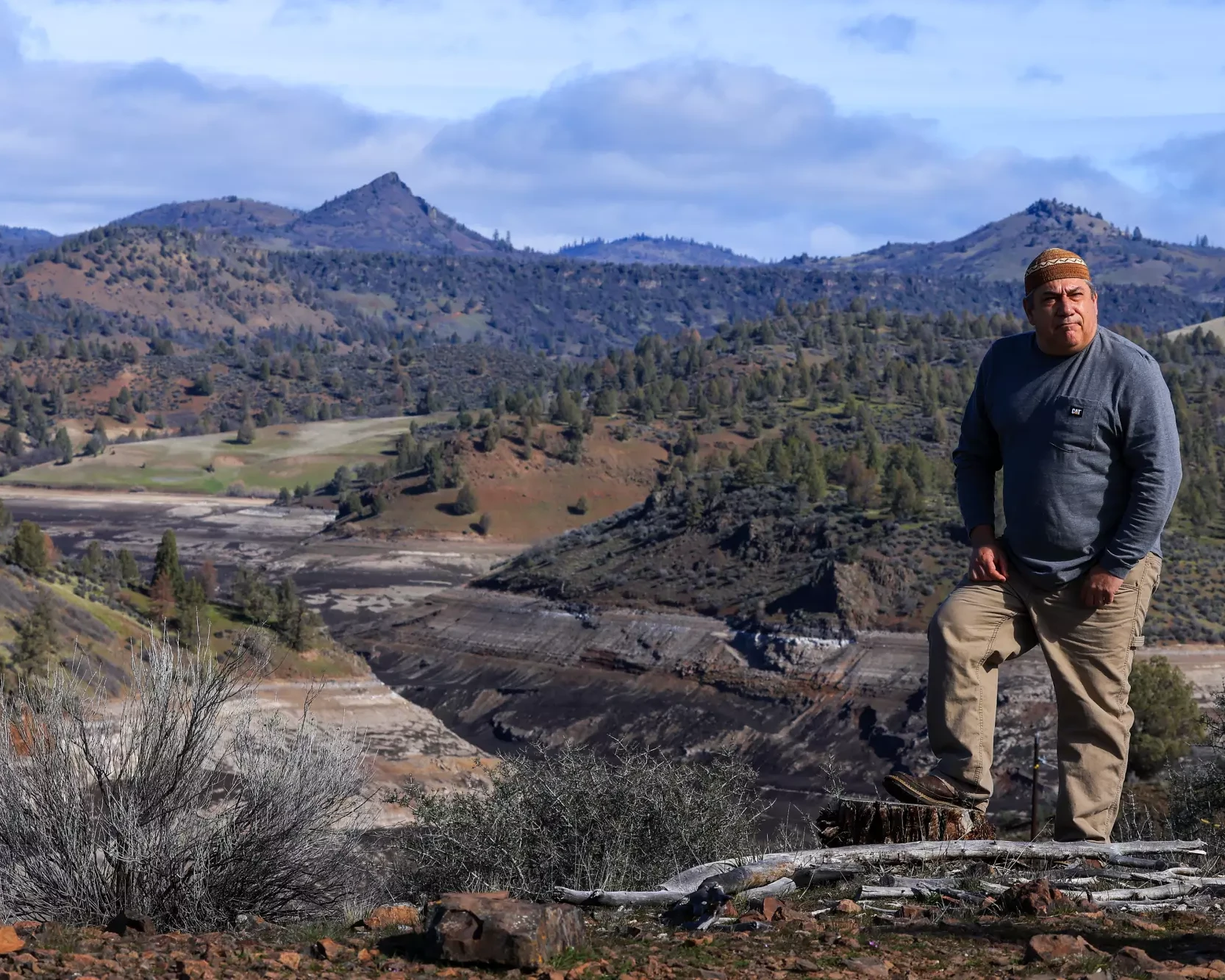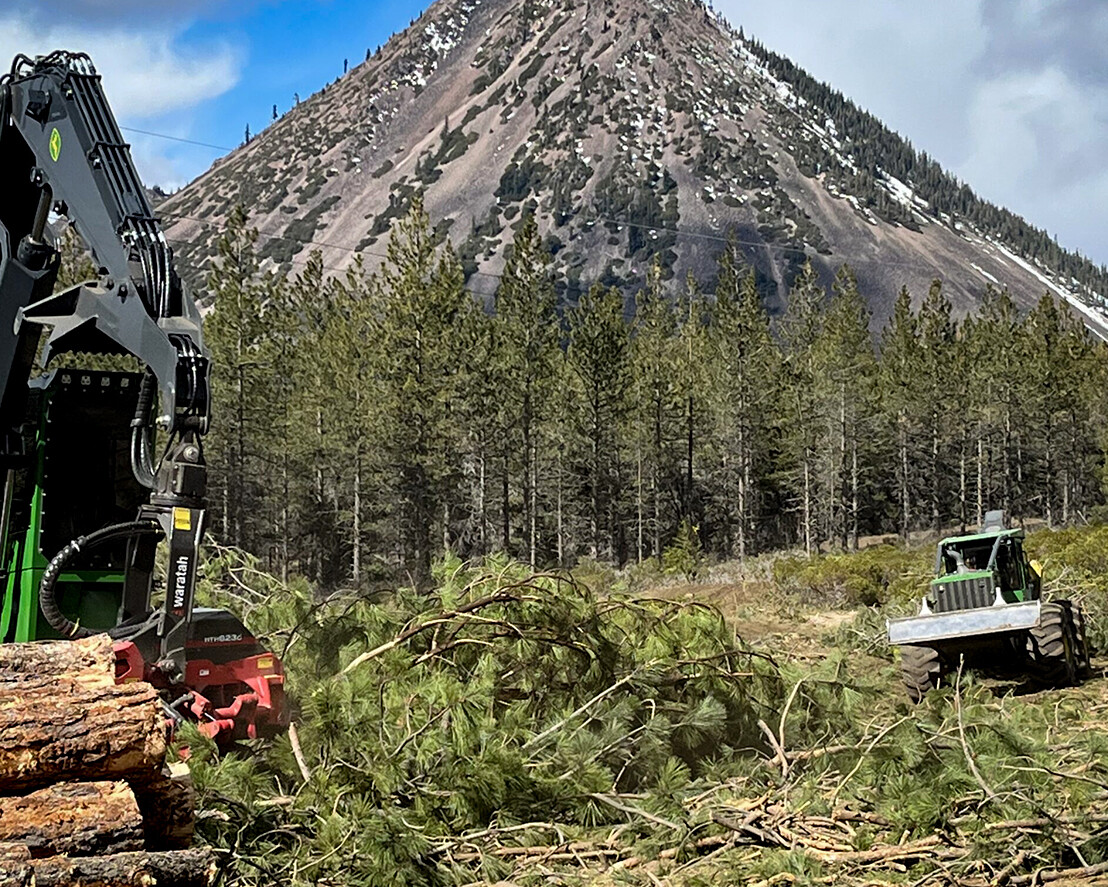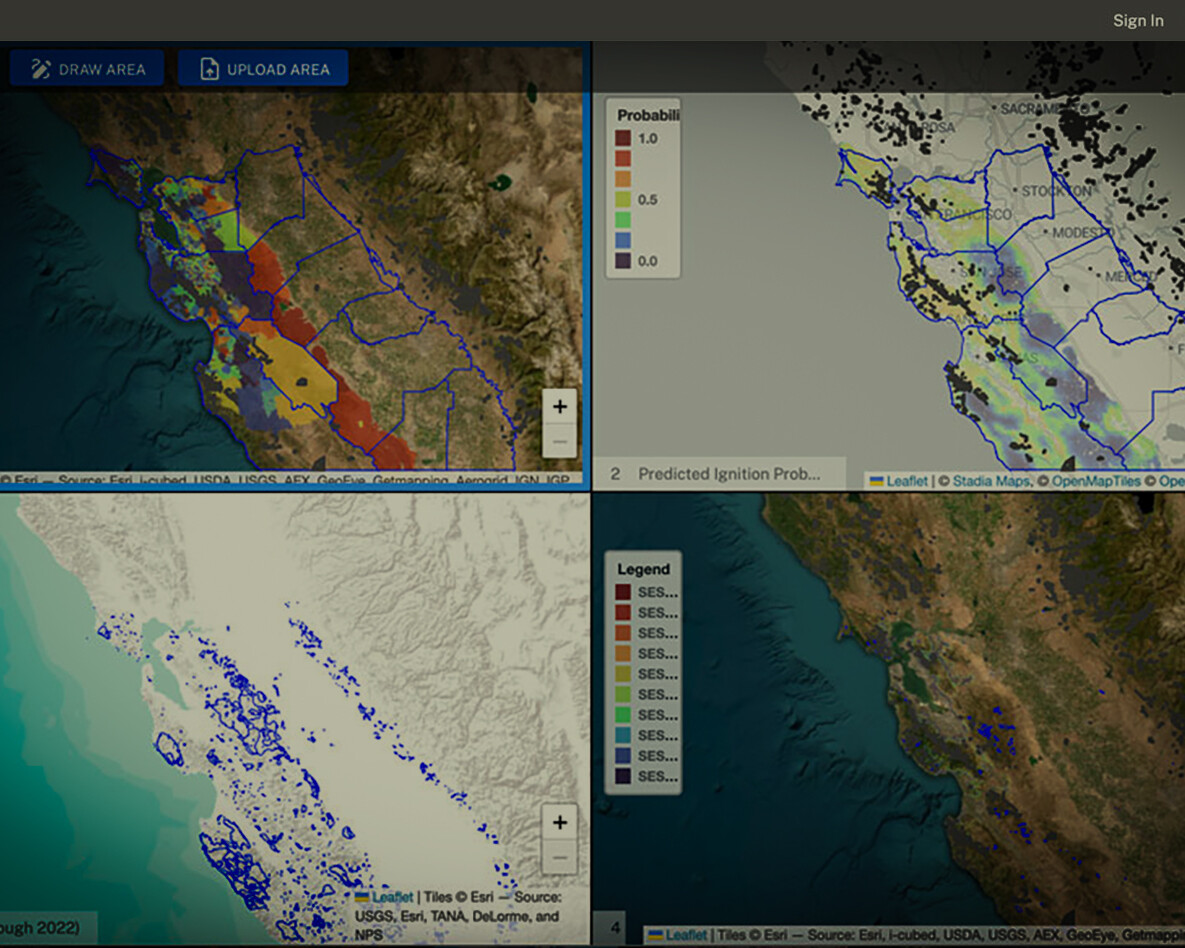First Set of Projects Fast-tracked as Part of Governor’s Emergency Proclamation on Wildfire
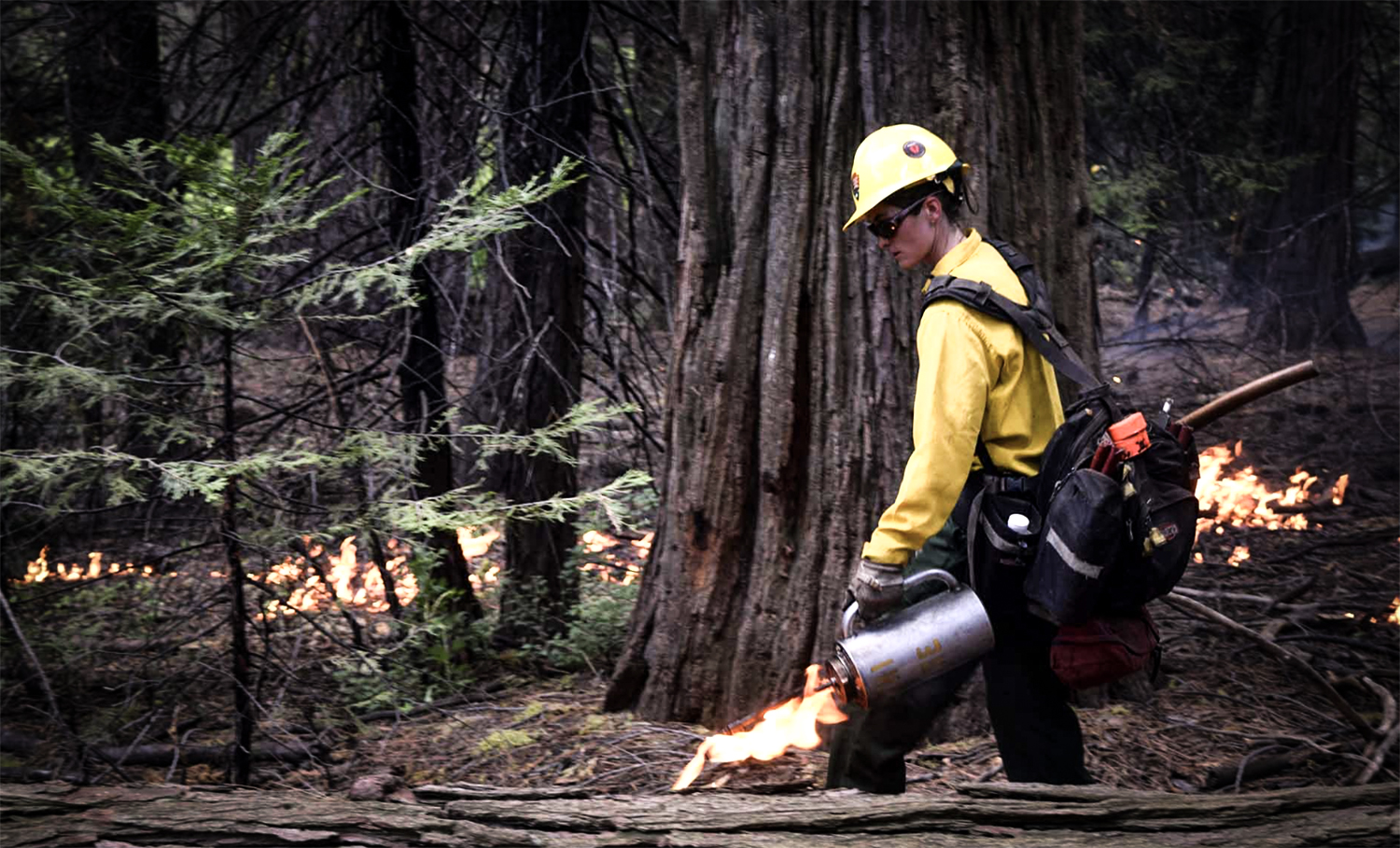
CNRA and CalEPA Identify First Set of Fast-tracked Projects as Part of Governor’s Emergency Proclamation on Wildfire
New Streamlined Process:
Governor Newsom issued an Emergency Proclamation (Proclamation) on March 1, 2025, to confront the severe ongoing risk of catastrophic wildfires that threatens public safety across California. The Proclamation authorizes the Secretaries of the California Natural Resources Agency (CNRA) and the California Environmental Protection Agency (CalEPA) to determine which projects are eligible for suspension of certain State of California statutory and regulatory requirements to expedite critical fuels reduction projects, while at the same time protecting public resources and the environment. The Task Force has established a website that includes eligibility criteria, FAQs, and a link to the application to request a determination of eligibility for suspension of relevant State of California statutory and regulatory requirements. The Secretaries also hosted a virtual briefing on the Proclamation and the process.
First Set of Approved Projects:
Just one week after applications opened, CNRA and CalEPA identified a 450-acre collaborative wildfire resilience project in Humboldt County as the first project to be determined eligible for streamlining. Three projects totaling 882 acres have been approved to date, spanning from the northern California coast to Sierra Nevada Mountains and all the way down to San Diego. Each of these projects involve tribes and other partners, natural resource managers and fire districts. Here is an overview of the first set of approved projects.
- The Prosper Ridge Community Wildfire Resilience Project in Humboldt County is the first approved project under the Governor’s emergency proclamation on wildfire. This collaborative state, federal, and tribal project will treat nearly 450 acres with a combination of mechanical thinning, manual treatments, and prescribed fire.
- The Sycuan Wildfire Resiliency Project covers over 240 acres in San Diego County and aims to protect the Sycuan Reservation from wildfire by reducing fire hazard, ensuring defensible space, and providing safe egress with the use of 300 grazing goats.
- Vedanta Hazardous Fuels Reduction Project will reduce wildfire risk, improve forest health and enhance landscape resilience within the WUI, reducing risk of crown fires spans across 190 acres near Lake Tahoe.
These projects are focused on removing flammable dead or dying trees, creating strategic fuel breaks, creating safe egress along roadways, manual and mechanical removal of ladder fuels and beneficial fire use. Approved project location maps and documentation will be made available on the Task Force website.
Requests to Suspend State Statutes and Regulations
Fast-Tracking Critical Fuels Reduction Projects:
Requests to Suspend State Statutes and Regulations
Governor Newsom issued an Emergency Proclamation (Proclamation) on March 1, 2025 to confront the severe ongoing risk of catastrophic wildfires that threatens public safety across California.
The Proclamation authorizes the Secretaries of the California Natural Resources Agency (CNRA) and the California Environmental Protection Agency (CalEPA) to determine which projects are eligible for suspension of certain State of California statutory and regulatory requirements to expedite critical fuels reduction projects, while at the same time protecting public health and the environment.
Eligibility:
A project is eligible to operate under the suspension of state laws if it meets all four of the following requirements:
1. The primary objective of the project is at least one of these activities:
-
- Removal of hazardous, dead, and/or dying trees
- Removal of vegetation for the creation of strategic fuel breaks as identified by approved fire prevention plans, including without limitation, CAL FIRE Unit Fire Plans or Community Wildfire Preparedness Plans
- Removal of vegetation for community defensible space
- Removal of vegetation along roadways, high-ways, and freeways for the creation of safer ingress and egress routes for the public and responders and/or to reduce roadside ignitions
- Removal of vegetation using cultural traditional ecological knowledge for cultural burning and/or prescribed fire treatments for fuels reduction
- Maintenance of previously established fuel breaks or fuels modification projects
2. The request for suspension is submitted in the 2025 calendar year.
3. Work will be performed or supervised by qualified responsible parties, such as Registered Professional Foresters, Certified Rangeland Managers, qualified vegetation management contractors, qualified incident commanders, certified arborists, certified burn bosses and authorized cultural burners.
4. Work will follow Best Management Practices (BMPs) and measures identified in the Statewide Fuels Reduction Environmental Protection Plan (EPP).
As identified above, projects that receive suspension must focus on critical fuels reduction to combat catastrophic fires and promote community safety and resiliency. This includes, but is not limited to, projects identified in CAL FIRE Unit Fire Plans, Community Wildfire Preparedness Plans, and Utility Wildfire Mitigation Plans provided they meet the objectives above.
Statewide Fuels Reduction Environmental Protection Plan (EPP):
Project Support Resources:
File a Suspension Request:
Approved Project Information:
FAQ's
Given the severe threat of catastrophic wildfire risk, the Newsom Administration is moving to expedite fuel reduction projects that protect public safety and communities. Consistent with Governor Newsom’s March 1 State of Emergency Proclamation (Proclamation) the Secretaries of the California Natural Resources Agency (CNRA) and the California Environmental Protection Agency (CalEPA) are authorized to determine which projects are eligible for suspension of certain state laws and regulations to expedite critical fuels reduction projects, while at the same time protecting public health and the environment.
A project is eligible to operate under the suspension of state laws if it meets all four of the following requirements:
1. The primary objective of the project is at least one of these activities:
-
- Removal of hazardous, dead, and/or dying trees
- Removal of vegetation for the creation of strategic fuel breaks as identified by approved fire prevention plans, including without limitation, CAL FIRE Unit Fire Plans or Community Wildfire Preparedness Plans
- Removal of vegetation for community defensible space
- Removal of vegetation along roadways, high-ways, and freeways for the creation of safer ingress and egress routes for the public and responders and/or to reduce roadside ignitions
- Removal of vegetation using cultural traditional ecological knowledge for cultural burning and/or prescribed fire treatments for fuels reduction
- Maintenance of previously established fuel breaks or fuels modification projects
2. The request for suspension is submitted in the 2025 calendar year.
3. Work will be performed or supervised by qualified responsible parties, such as Registered Professional Foresters, Certified Rangeland Managers, qualified vegetation management contractors, qualified incident commanders, certified arborists, certified burn bosses and authorized cultural burners.
4. Work will follow Best Management Practices (BMPs) and measures identified in the Statewide Fuels Reduction Environmental Protection Plan (EPP).
As identified above, projects that receive suspension must focus on critical fuels reduction to combat catastrophic fires and promote community safety and resiliency. This includes, but is not limited to, projects identified in CAL FIRE Unit Fire Plans, Community Wildfire Preparedness Plans, and Utility Wildfire Mitigation Plans provided they meet the objectives above.
Eligible entities include, but are not limited to, public agencies, Tribes, Resource Conservation Districts, non-governmental organizations, Fire Safe Councils, utilities and professional land managers.
The following state statutes and regulations that fall within the jurisdiction of the California Environmental Protection Agency and the California Natural Resources Agency are eligible for suspension under the State of Emergency proclamation:
-
-
- California Environmental Quality Act (Public Resources Code [PRC] Section 21000 et seq.)
- California Coastal Act (PRC Section 30000 et seq.)
- California Endangered Species Act (Fish and Game Code [FGC] Sections 2050-2115.5); Prohibition of the take of any species of wildlife designated as endangered, threatened, or candidates for listing.
- Lake or Streambed Alteration Agreement, notification of significant alteration to stream channel, bank or bed (FGC Section 1600 et seq.)
- Native Plant Protection Act (FGC Section 1900 et seq.)
- Western Joshua Tree Conservation Act (FGC Section 1927 et seq.)
- California Fully Protected Birds (FGC Section 3511)
- California Migratory Bird Protection Act (FGC Section 3513)
- California Fully Protected Mammals (FGC Section 4700)
- California Fully Protected Reptiles and Amphibians (FGC Section 5050)
- California Fully Protected Fish (FGC Section 5515)
- FGC Sections 5650 and 5652; Deposition of deleterious material into waters of the state.
- FGC Section 5901; Fish passage.
- FGC Section 5937; Sufficient water for fish.
- FGC Section 5948; Obstruction of streams.
- FGC Section 2000; Taking is unlawful except as provided
- FGC Sections 3503 and 3503.5; Protection for bird nests and eggs and birds of prey
- FGC Section § 86, where “Take” shall be avoided. Take is defined as to hunt, pursue, catch, capture, or kill, or attempt to hunt, pursue, catch, capture, or kill.
- 14 CCR Section 13001 et seq.; California Coastal Commission Administrative Regulations
- California Water Code (CWC) Section 13160 and all regulations pursuant to that section; Water quality certification for discharges to navigable waters
- CWC Section 13260 and all regulations pursuant to that section; report of waste discharge requirement for discharges of waste or proposed discharges of waste to waters of the state
- 17 CCR Sections 80100-80330; Smoke Management Guidelines for Agricultural and Prescribed Burning
-
Suspensions apply only to these identified state statutes and regulatory requirements. Applicable local and federal laws and regulations remain in place.
A project proponent completes the online application, which can be found at this website landing page. Completing this application provides the Secretaries and their state agencies all needed information to determine if suspension can be granted. Project proponents will receive notification within 30 calendar days if their application has been approved.
The request for suspension, made through the online application, must be submitted in the 2025 calendar year. On-the-ground work must begin no later than October 15, 2026. The expectation is that projects will be completed within two years of initiating work on the ground.
No. Once approved, suspensions remain in effect for the duration of project work.
Projects must meet the eligibility criteria identified above. When applicants submit suspension requests, they attest that project work will comply with BMPs and measures identified in the Statewide Fuels Reduction Environmental Protection Plan. Secretarial Determinations are conditioned on compliance with the EPP. Agency staff will have the opportunity to inspect project sites to assess EPP compliance and make recommendations for resource protection.
For-profit commercial timber operations that do not have as a primary objective one of the six listed above and cited in the State of Emergency proclamation.
Large landscape projects of over 3,000 acres are not eligible for suspension and are advised to pursue permitting through the California Vegetation Treatment Program (CalVTP) process.
The Statewide Fuels Reduction Environmental Protection Plan (EPP) can be found here. It identifies the Best Management Practices and measures which must be followed by projects that receive suspensions. The EPP streamlines and simplifies the substantive requirements that would otherwise govern fuels reduction projects through the normal regulatory process. The EPP covers practices such as:
- Access to the project site for inspection
- Identifying and protecting sensitive resources
- Tribal cultural resources
- Coastal zone sensitive habitat
- Riparian and water quality
- Biological resources such as habitat, fish and wildfire
- Measures to control sediment and erosion
- Procedures when conducting prescribed fire and grazing
No. To ensure a consistent approach for implementation, the Secretaries will condition their determinations on compliance with the Statewide Fuels Reduction EPP; alternative plans developed by others are not being accepted.
The Governor’s Emergency Order issued on March 1 called on the California Board of Forestry to refine and expand the California Vegetation Treatment Program. The Board of Forestry has taken steps to begin the process of updating the CalVTP, including soliciting input from practitioners on how to improve the process. The updated process could take approximately one year, though the exact timing will depend on the level of input received and the scope of changes to be made.
Please note that the information below is intended as a resource to help applicants navigate their project planning and implementation needs. However, the State provides no assurances that the entities listed below are available for project requests. Please be advised that receiving assistance is not a guarantee that your project will be approved for a State of Emergency Proclamation suspension.
Agency Contacts:
CAL FIRE Regional Unit Forester Contact List
Local CA Department of Fish & Wildlife Contact List
University of California Agriculture and Natural Resources Fire Network Contact List
California Department of Conservation Regional Fire and Forest Capacity (RFFC) Program Contact List:
North Coast Resource Partnership
Rose Roberts – rroberts@northcoastresourcepartnership.org
North Sacramento Valley Coalition
Greg Conant – greg@glenncountyrcd.org
Tahoe Conservancy
Christine Aralia – Christine.Aralia@tahoe.ca.gov
Santa Monica Mountains Conservancy
Sarah Kevorkian – sarah.kevorkian@mrca.ca.gov
Rivers and Mountains Conservancy
Blair Crossman – bcrossman@rmc.ca.gov
Inland Empire RCD
Susie Kirschner – skirschner@iercd.org
Inland Empire Community Foundation
David Hernandez – dhernandez@iegives.org
RCD of Greater San Diego
Stan Hill – stan.hill@rcdsandiego.org
State Coastal Conservancy
Lilly Allen – lilly.allen@scc.ca.gov
Irvine Ranch Conservancy
Madi Killebrew – mkillebrew@irconservancy.org
Resources to Find Licensed or Certified Professionals:
Find a Registered Professional Forester
Find a Certified Rangeland Manager
Verify the license of someone you may already working with
USDA California Climate Hub Provides Forestry Resource Repository for Land Managers
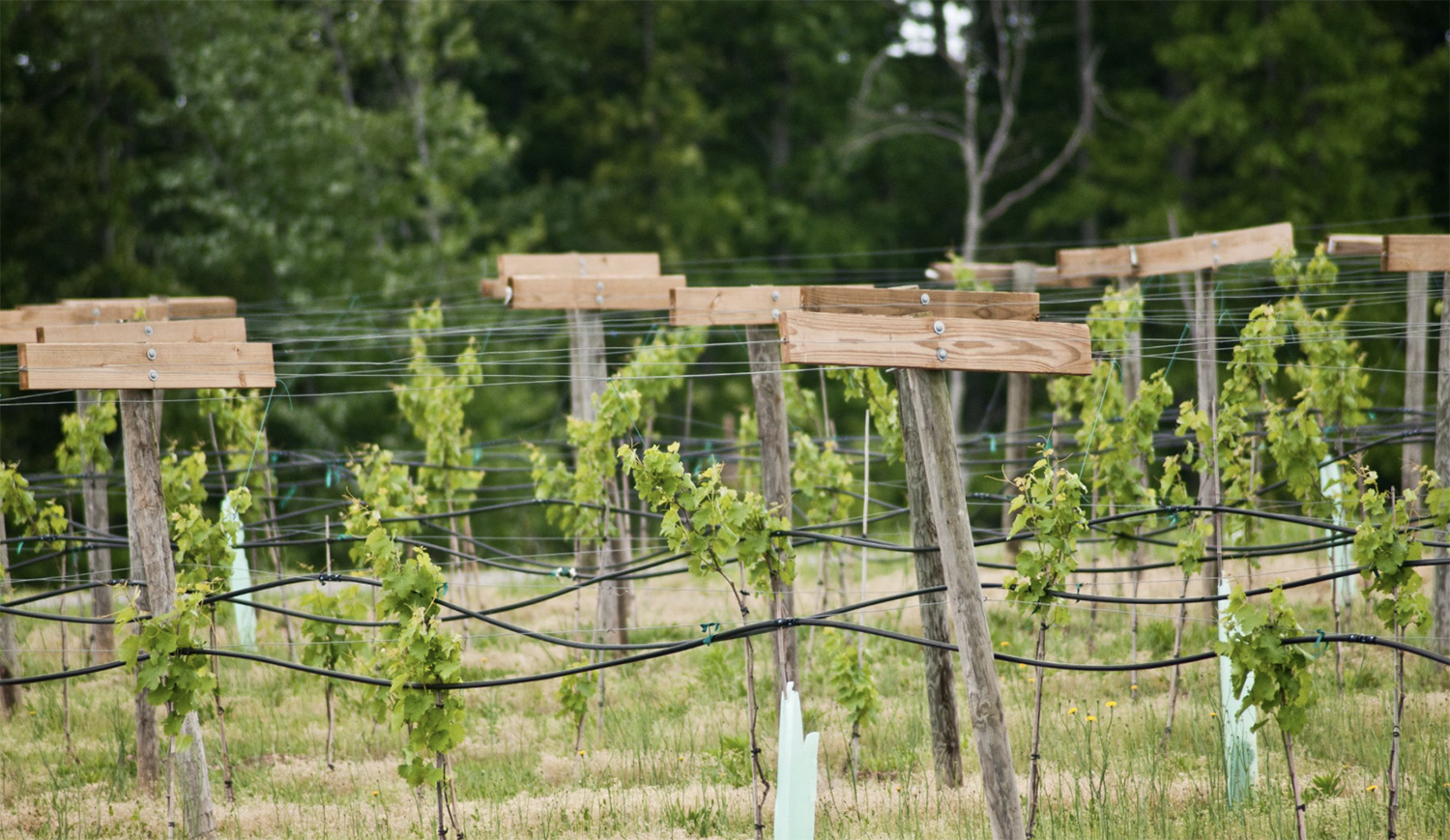
New Website Provides Forestry Resource Repository for Land Managers
January 8, 2025 – The USDA California Climate Hub released a new webpage that compiles datasets and decision-support tools to help land managers and natural resource professionals with assessing the conditions of a landscape for project planning. The list is not exhaustive of all resources but focuses on data and tools available to the public, with an emphasis on resources available within the state of California. The repository also contains a series of factsheets, produced by the USDA California Climate Hub, that offer a succinct overview of the California Wildfire and Forest Resilience Task Force’s Regional Resource Kits and its constituent products.
button test
TASK FORCE RELEASES 2025 KEY DELIVERABLES
Lists Top Priorities and Major Initiatives
in Advance of Updated Action Plan
Task Force Launches New Work Group on Healthy Watersheds
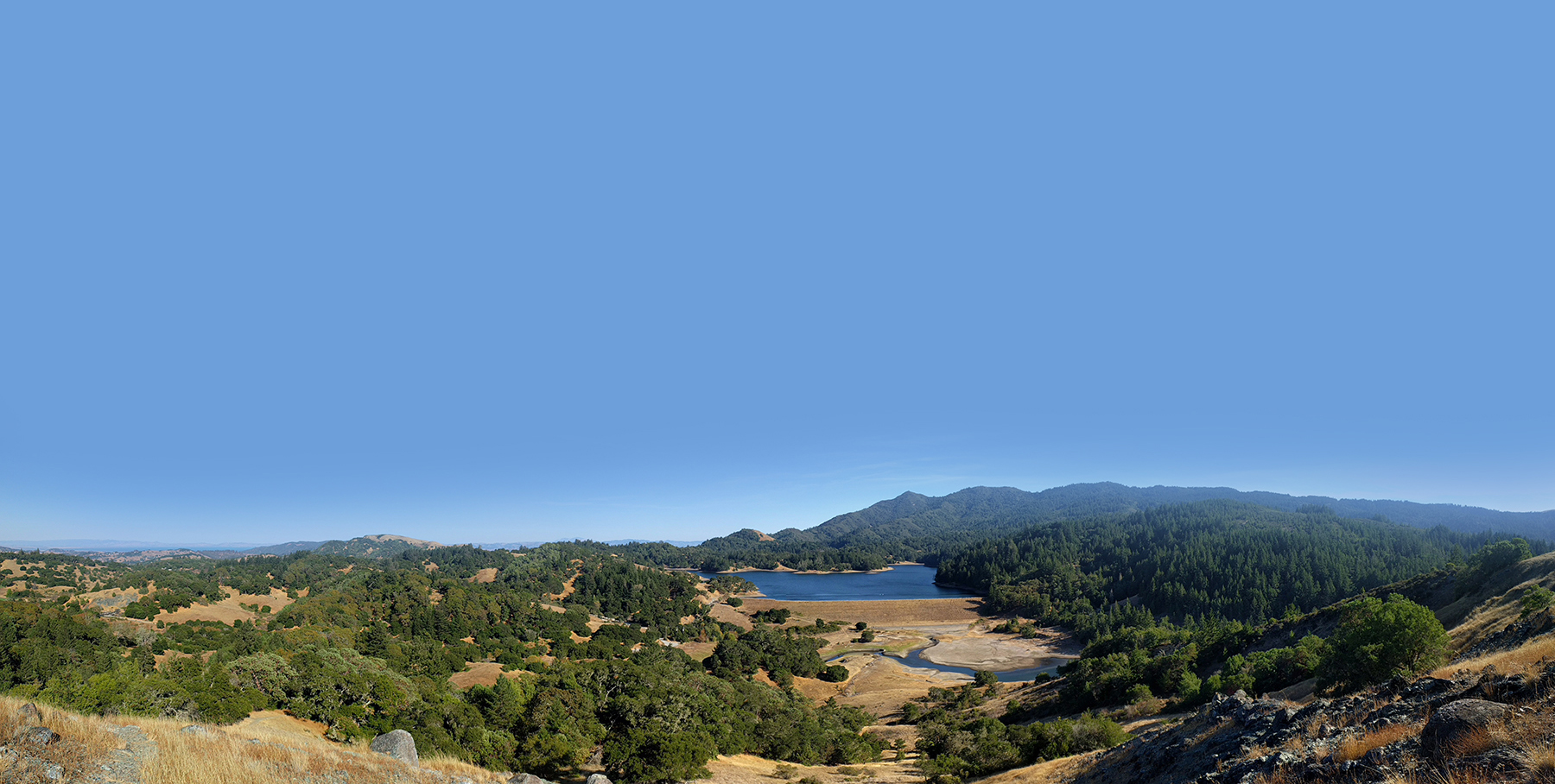
Task Force Launches New Work Group on Healthy Watersheds
August 6, 2024 – The Task Force launched its newest work group which focuses on a critical aspect of the CA Wildfire & Forest Resilience Action Plan – the intersection between watershed health and landscape resilience to wildfire.
It’s well known that wildfires adversely impact watersheds. But it’s important to also recognize that healthy watersheds play a key role in mitigating catastrophic wildfires. The Watershed Work Group promotes fire resilience and watershed health programs that share these important priorities.
Visit the Healthy Watersheds Work Group webpage to learn more about the Work Group partnering organizations and to access a list of programs, plans, and strategies focused on California’s water supply and security.
Forest Service Conducts Fuel Reduction Work in Lake Tahoe Basin

Forest Service Conducts Fuel Reduction Work in Lake Tahoe Basin
The USDA Forest Service Lake Tahoe Basin Management Unit continues cut-to-length mechanical fuels reduction (forest thinning) operations on approximately 275 acres around the Lake Tahoe Basin. This fuels reduction work is part of the NV Energy Resilience Corridors Project that aims to reduce the risk of severe wildfire and create healthier and more resilient forests.
Reclamation Continues Wildfire Prevention in Auburn Project Lands with Fuels Reduction Project

Reclamation Continues Wildfire Prevention in Auburn Project Lands with Fuels Reduction Project
The Auburn area Five-Year Fuels Reduction Project work is on schedule and the Bureau of Reclamation’s contractor, Wildfire Services Group, Inc., has completed several segments of shaded fuel break construction and maintenance work on Auburn Project Lands within the Auburn State Recreation Area in Placer and El Dorado counties.
USFS Uses Machine Learning to Promote Meadow Restoration
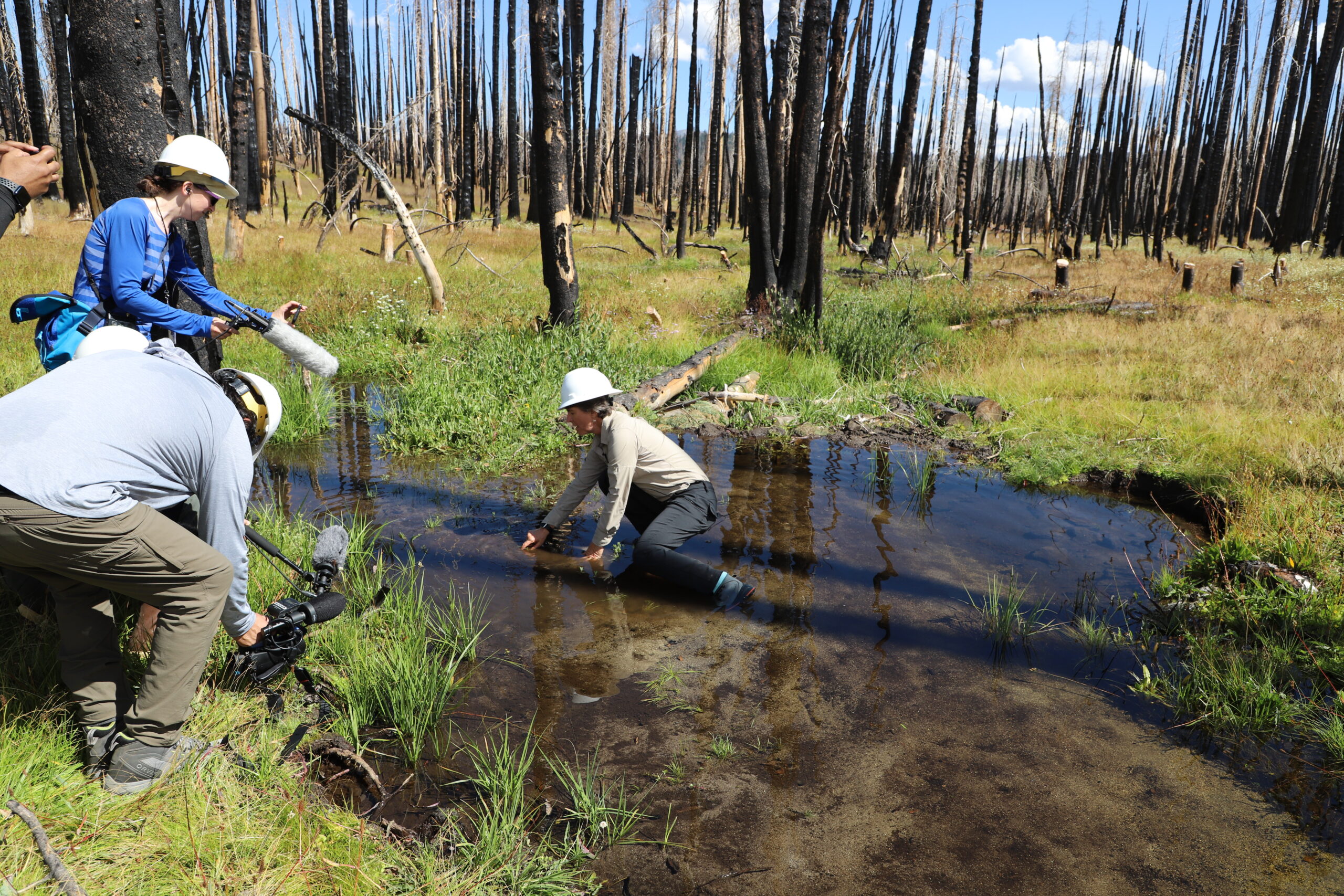
USFS Uses Machine Learning to Promote Meadow Restoration
Pacific Southwest Research Station U.S. Forest Service ecologists have developed new machine learning algorithms to identify potential locations of lost meadows where forests now encroach. Meadows in California’s Sierra Nevada mountains historically covered nearly three times the area they do today. New maps of lost meadows provide a large-scale perspective to help us think differently about the historical importance of meadows and the positive impact their restoration could have on streamflow and wildfire management.
Project Implementation in High-Risk Regions – Santa Monica Mountains
Project Implementation in High-Risk Regions – Santa Monica Mountains
Department: Santa Monica Mountains Conservancy
Program Description: The Santa Monica Mountains Conservancy prioritized wildfire resilience projects that proactively reduce the risk of wildfire, strengthen wildfire resilience, increase carbon sequestration, rally against the effects of climate change, and dedicate more resources to local community infrastructure.
Program Impact: In 2022, the Conservancy coordinated with partner agencies, non-profit organizations, local tribes, and other stakeholders to kickstart projects that performed one or more of the following types of wildfire resilience activities.
Wildfire resilience activities included:
- Removing dry, hazardous, or non-native vegetation that poses ignition risk and habitat restoration
- Increasing the efficacy of wildfire response through emergency operations equipment and workforce development
- Ignition monitoring program
- Fire hardening at-risk structures
Conservancy wildfire resilience efforts, initiated in 2021 and sustained throughout 2022, addressed major wildfire hazards in the Santa Monica Recreation Area. State funding supported projects that mitigate hazards posed by fuel-vegetation, human actions, and at-risk structures. Investment in workforce development and capacity building in climate, fire resilience, and habitat restoration further enhanced wildfire prevention and emergency response operations. Ongoing project efforts will continue to reduce wildfire risk throughout the 2023 fire season and following years.

Native plants at Elyria Canyon Nursery to be installed at habitat restoration sites
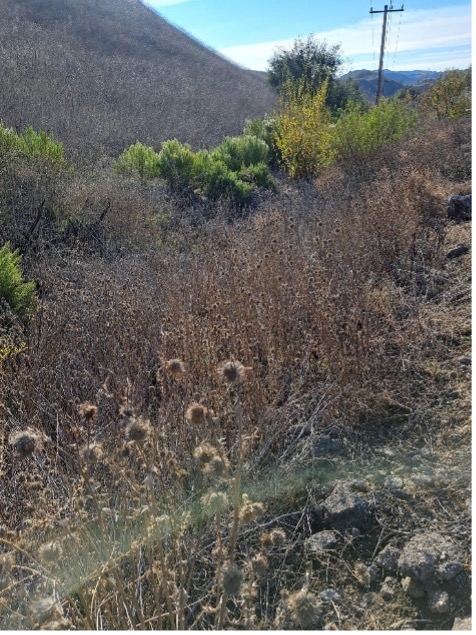
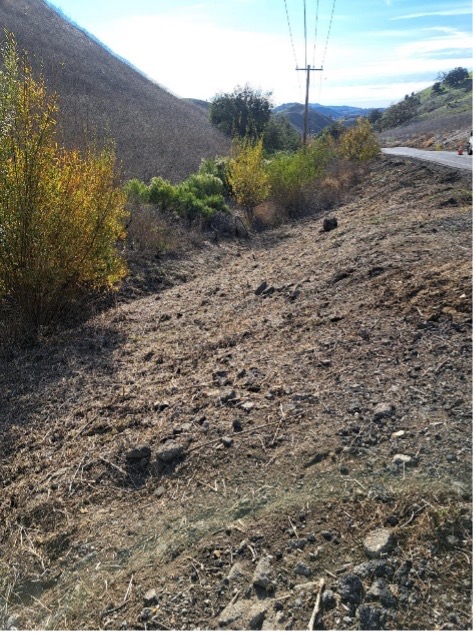
Before and after photos of completed fuel reduction treatments (mowing) to reduce flammable, flashy fuels in strategic locations of the Santa Monica Mountains.
Resilience in Action: Fuel reduction along the ignition-prone highway 101 corridor continued in 2022, and as of January 2023, approximately 2,000 fire-resistant oaks have been planted at five key sites. In the coming years, fire-resistant oak habitat will replace the existent grassy fuel vegetation and serve as a natural fire buffer around the freeway. Funding for workforce development supported an expanded crew of seasonal firefighters in the Fire Division of the Mountains Recreation and Conservation Authority who received basic and advanced fire training classes, drills, and fuel vegetation removal.

Roadside vegetation management and oak habitat planting project to reduce ignition risk posed by nearby US Highway 101
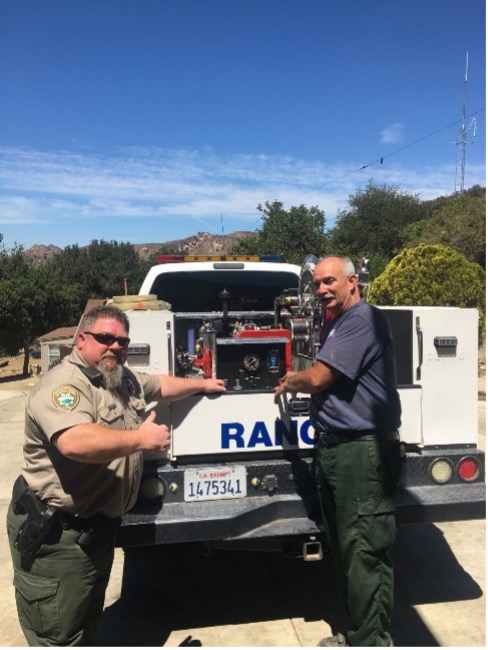
New portable water pumps installed on daily patrol vehicles in conjunction with water tanks and fire hoses allow rangers to respond to fires on patrol
RESOURCES
USFS Awards CALREC Vision Partnership of the Year
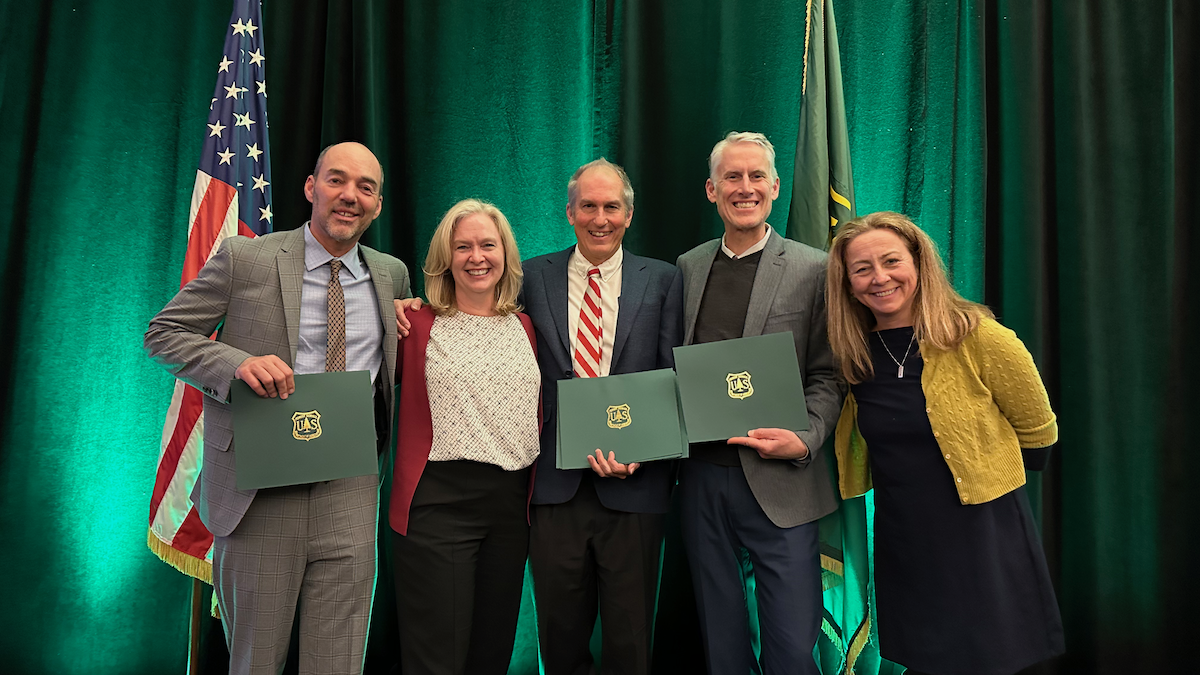
USFS Awards CALREC Vision Partnership of the Year
December 14, 2022 – At the Regional Foresters Awards Ceremony in Sacramento, CA, the Leadership Team of the Sustainable Recreation/CALREC Vision Key Working Group (SRCRV) was awarded a Regional Forester’s Honor Award for Partnership of the Year from the U.S. Forest Service Pacific Southwest Region. The award recognizes the Leadership Team’s efforts to develop California’s Joint Strategy for Sustainable Outdoor Recreation and Wildfire Resilience for California’s Wildfire & Forest Resilience Task Force. The Joint Strategy satisfies Key Actions 3.13 and 3.14 of the California Wildfire and Forest Resilience Action Plan. The California Wildfire and Forest Resilience Task Force will publish the Joint Strategy in early 2023.
Accepting the award with Jennifer Eberlein (second from left), from left to right are Bill Keane, Climate Equity Solutions, Inc.; John Wentworth, Mammoth Lakes Trails and Public Access Foundation; Austin McInerny, Consensus and Collaboration Program, College of Continuing Education, Sacramento State University; and Nancy Parachini, USFS Deputy Director of Public Services.
